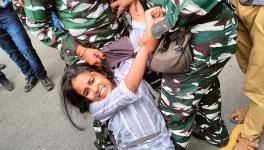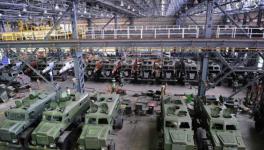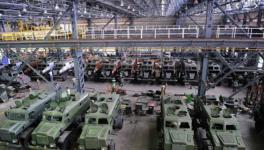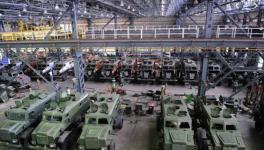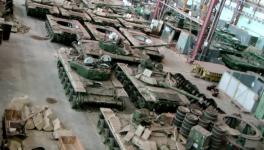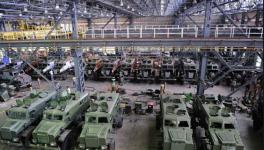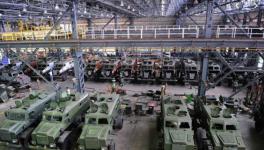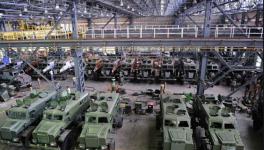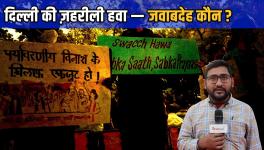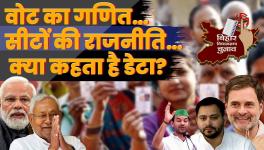Why do Armed Forces Personnel Continue to Commit Suicide?
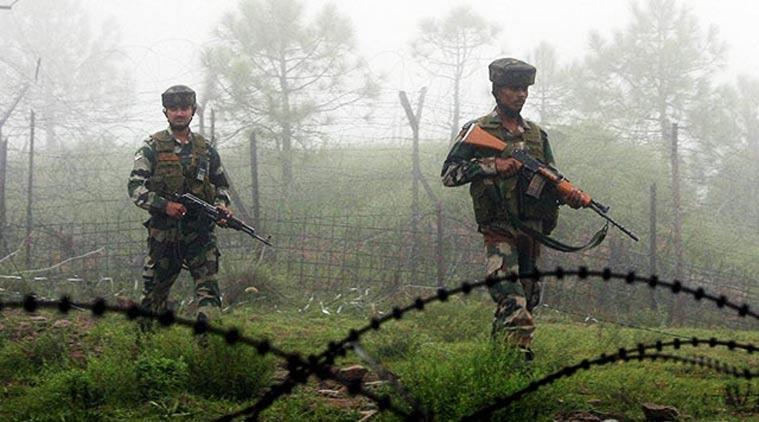
One person on duty from Armed Forces commits suicide every three days. According to data compiled by the Ministry of Defence for the period January 1, 2014 to March 31st, 2017 three hundred and forty eight personnel committed suicide while on duty. OF these 276 were from the Army, 12 from Navy and sixty from the Air Force. In the preceding four years 597 personnel of Army committed suicide: 116 in 2010, 105 in 2011, 95 in 2012 and 86 in 2013. In past as now the Ministry of Defense blames personal reasons including land related disputes back home and apathy shown by civil authorities towards such problems for the recurring occurrence of suicide.
Despite all the measures taken by the Government over the years to address the personal grievances of the armed forces personnel if they continue to occur then it seems that Government is also being parsimonious in acknowledging the role played by other factors. Because most of the suicides occur while on duty and mostly reported from Jammu and Kashmir or the North East, the link between suicide with stress and trauma related to their active duty in operations cannot be discounted. While prolonged deployment in counter-insurgency operations in J&K and northeast takes its toll on the physical endurance and mental health of soldiers, it is compounded by other problems such as ineffectual leadership and sometimes humiliation at the hands of their officers.
Given that armed forces of the union are treated as ‘holy cows’ and there is reluctance to raise issues that have to do with structural problems the public is oblivious of these problems. In 2015 when Ex-Servicemen went on strike on the issue of One Rank One Pay and held their dharna at Delhi’s Jantar Mantar, parallel to them was an agitation launched by an organization called Voice of Ex-Servicemen Society (VESS) to highlight the fact that the interests of Personnel Below Officer Rank and commissioned officers were quite different. Quiet apart from pay/allowance related matters where they sought parity between PBOR and Officer Rank because they claimed that the Jawans are always in ‘line of fire’ and face ‘maximum threat to their life in any conflict’ more startlingly, VESS spoke about discrimination and exploitation of the Jawans within the AFU. Their charter of demand for the Dharna held in New Delhi on 2nd August 2015 contains some very significant issues:
Demand No 10. The untouchability and ghetto system practiced by all Armed forces Ancillary services to be abolished. e.g. AWHO projects have separate enclaves for Officers and PBORs, even though cost of the dwellings are same for both.
DN 11. Elimination of sewadari system from Army. Soldiers are for Fighting wars – not domestic servants
DN 15. Re-structuring and modernising forces in professional manner by removing colonial discrimination by their roots, in similar ways of modern Forces similar lines of American Army.
DN17. Discrimination prevalent in armed forces should be eliminated in all it form. Forces have become VVIP racism hubs with almost every facility being reserved for officers, including toilets.
- 19. Reducing corruption in armed forces, by creating a platform wherein corrupt practices can be reported by PBOR without fear of retribution- Similar to Whistle blower protection act.
In other words their charter of demands drew attention to undemocratic practices which prevail in the Armed Forces of the Union. Ask any army officer and they will concur with the view that the ‘bedrock of the armed forces is discipline’. And conversely, that an ‘undisciplined force is extremely dangerous’. However, the problems which exist between PBOR and the Officers are swept under the carpet. However, the Army personnel have not shied away from addressing this problem.
A research commissioned by IDSA “Building Army’s Human Resources for Sub-Conventional Warfare”: K C Dixit; page 32; Pentagon Security International; 2102: http://www.idsa.in/system/files/book/book_dixit_intro.pdf lends support to the above but from an altogether different perspective. The author a serving officer undertook a survey of 1085 personnel (60 officers and 1025 PBOR) and posed 38 questions. All of them were deployed in Jammu & Kashmir. Questions 19 and 20 bring out the simmering discontent within the Ranks. To the question (#19) if disciplinary cases were being disposed off promptly, ninety four per cent of the respondents said they were “unhappy” with the pace of disposal. To the next question (#20) ‘why cases of indiscipline take long to dispose off?’ again 94 % blamed it on “excessive commitment and shortage of officers”.
This acquires yet another shape when we bring in some other questions from the survey which directly relate to field or operational experience of the personnel, its impact on their morale, and resulting stress leading to suicide, fragging, attacks on officers etc.
For instance 93 % of the respondents complained of “inadequate briefing” about the terrain, militants, cases of insurgency and local population when they were “inducted” (Q# 25). To the question whether it is possible to identify militants, 33% said it was “difficult” and 67% felt it was “very difficult” (Q#4). 84% were dissatisfied with delegation of authority to junior leaders (Q#14). 77% felt discouraged for sharing their ideas for better results in CI Operations (Q#15). 76 % felt that operations were launched in haste (Q# 16). 74 %felt stressed due to fear of committing human right violations (Q# 17). 67 % felt that superiors push for ‘glory seeking’ (Q#18). And above all 78 % said that they risked their lives for their “Unit Pride” (Q# 33).
This provides a glimpse into the nature of their work and its peculiarities. If they are unclear of their objective, they are to fight or regard everyone as an ‘enemy’, feel ‘unfairly’ condemned by Human Right activists, have problems with their officers, then all this makes for taking a closer look at armed conflicts at home where army personnel are deployed and what it does to those who are on the frontlines to carry out such operations.
The survey also brings out other problems which confront the army personnel. It found that 100 per cent of those surveyed felt it to be “difficult” for service personnel to distinguish between a combatant and non-combatant where they are deployed for carrying out operations against our own people. Thus the importance of the specific nature of “un-conventional” warfare, which is fought among our own people, stands out. We see here a ‘blurring of the distinction between front and rear, strategic and tactical actions and combatants and non-combatants’. The significance of all this lies in that it helps to bring out the kind of problems an armed forces personnel encounters when they are deployed for prolonged period to carry out operations against our own people.
To sum up, we can pretend that Indian armed forces are a disciplined force and that it has a glorious record of service to the “Nation”, never mind if this service involves ignoble wars waged on our own people and bestial behavior against civilians in war zones which has become pandemic. However, when one realizes that the very same force is being stressed out or that suicides continue to occur then it makes it all the more necessary for us to take stock of this aspect of our reality. To divert attention by pretending that suicides are a result of personal problems of the soldier and/or to insist on discipline by punishing the subordinate i.e. fear of retribution at the hands of officer, for every infraction may be well suited to Colonial Raj, but it scarcely behooves a Constitutional Republic.
Disclaimer: The views expressed here are the author's personal views, and do not necessarily represent the views of Newsclick.
Get the latest reports & analysis with people's perspective on Protests, movements & deep analytical videos, discussions of the current affairs in your Telegram app. Subscribe to NewsClick's Telegram channel & get Real-Time updates on stories, as they get published on our website.









